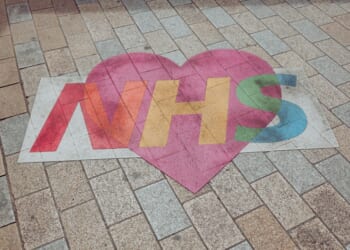This article is taken from the April 2025 issue of The Critic. To get the full magazine why not subscribe? Right now we’re offering five issues for just £10.
What is happening in the art world in the Arabian Gulf? The completion of museums on a spectacular scale with world-class collections is the clearest demonstration of the region’s cultural investment in recent years, whilst the sheikhs providing the funding are presumed, perhaps unjustly, to be focused on acquiring luxury goods.
This unabashed materialism, dependent on iconology and branding, seems at odds with the idealism, pseudo-intellectualism and iconoclasm of much contemporary art. But how do the two combine within a country that is also the guardian of Islam’s holiest sites and not known for freedom of expression?
Indeed, the large and very expensive museum projects in Qatar and Abu Dhabi may come to be dwarfed by Saudi Arabia’s plans. King Salman’s son, Crown Prince Mohammed bin Salman (MBS) is the mover behind the country’s Vision 2030, which seeks to promote culture as part of a diversified economy. Yet what exactly is the kingdom’s intention?
An excellent book seeks to explain the country’s past and signpost where it is headed. In Art in Saudi Arabia: A New Creative Economy? (2023), authors Rebecca Anne Proctor and Alia Al-Senussi highlight the dramatic change in direction from the religious conservatism of the years after 1979, until King Abdullah began, slowly, to loosen constraints.
After 2015, when MBS was appointed de facto ruler, the changes have been accelerated. Art and culture are now given a prominence and state investment unthinkable a decade ago, yet there remains the unresolved paradox of promoting artistic freedoms within an autocratic regime. How will this cultural patronage affect the global art market — and is there a Saudi art market to speak of?
The kingdom’s commercial art market is miniscule, with much of the buying done by the state and a few wealthy individuals. But this may be changing. Sotheby’s took the plunge by holding a sale in Riyadh in February of this year.
Titled “Origins”, it comprised a mixture of luxury goods such as handbags, jewellery, watches and international and Arabian modern and contemporary art, including works by Andy Warhol, Banksy and the renowned Saudi artist Mohammed Al Saleem. To the surprise of many, it was Arabian art that attracted the most bidding and generated the highest prices.
However, Sotheby’s auction was a sideshow compared with the enormous Islamic Arts Biennale at the Western Hajj Terminal at Jeddah airport (until 25 May). Amin Jaffer, one of the lead curators of this edition of the Biennale spoke of a regional “cultural boom” that brings together “audiences and participants from well beyond the Muslim world”.
Artists admit to self-censorship: dissent toward the regime results in punishment
The spectacular site of the Biennale allows for works to be shown in dramatic and arresting ways. Significantly, there were loans which represented a very wide range of global cultural heritage, signalling the intentions of the kingdom to work on a global scale: “This edition unites institutions from Timbuktu to Yogyakarta, featuring loans from the Vatican Apostolic Library, the V&A, Museo de la Alhambra, and the Hispanic Society Museum and Library,” Amin Jaffer explains. “This cultural convergence embodies the region’s far-reaching ambitions — not only in the arts but in shaping an intellectual and cultural narrative that bridges the region’s rich heritage with its future.”
There are numerous ambitious projects in train, from the Living Museum in AlUla and the country’s impressive archaeological sites; to the complex of new museums in the King Salman cultural district of Riyadh — the Museum of World Cultures, the National Theatre and the Royal Institute of Traditional Arts.
A paradox remains: how to foster a creative art scene within the setting of state control. Artists are no longer subject to the Inquisition-like Mutawa, the morality police charged with enforcing Islamic law, banned in 2016.
But artists admit to self-censorship. Dissent toward the regime results in punishment — and it probably does focus the mind when the most significant patron by far is the Ministry of Culture.
Historic parallels with the level of religious tolerance and state arts patronage of Louis XIV spring to mind; and perhaps also the creation of art during the former GDR, which saw much greater censorship.
It is axiomatic that art is a reflection of its time. As Saudi Arabia emerges from years of closure onto the international stage, the twin concerns of state patronage and artistic self-censorship will surely make for a very particular brand of culture.







